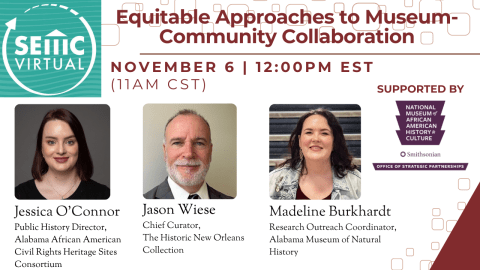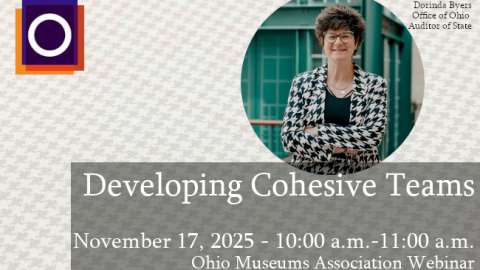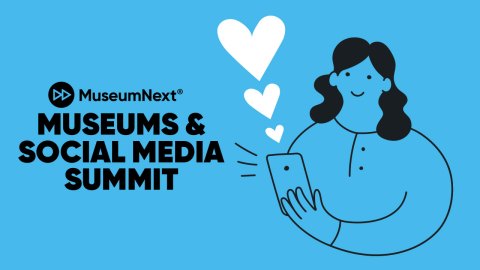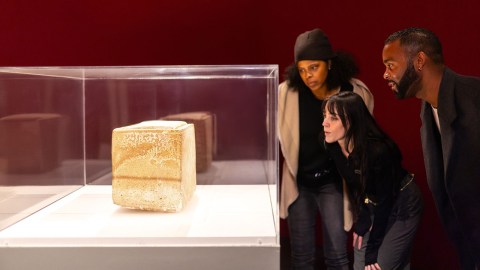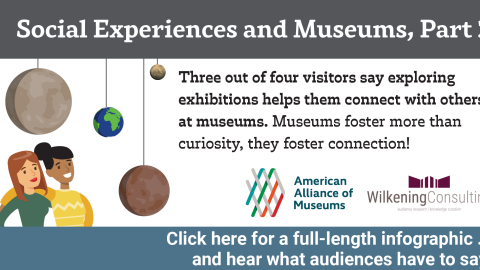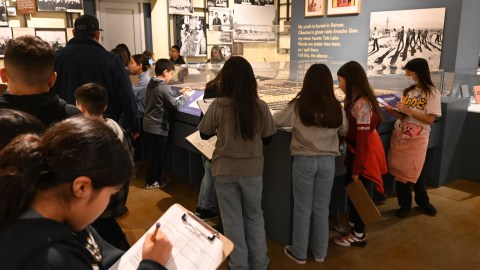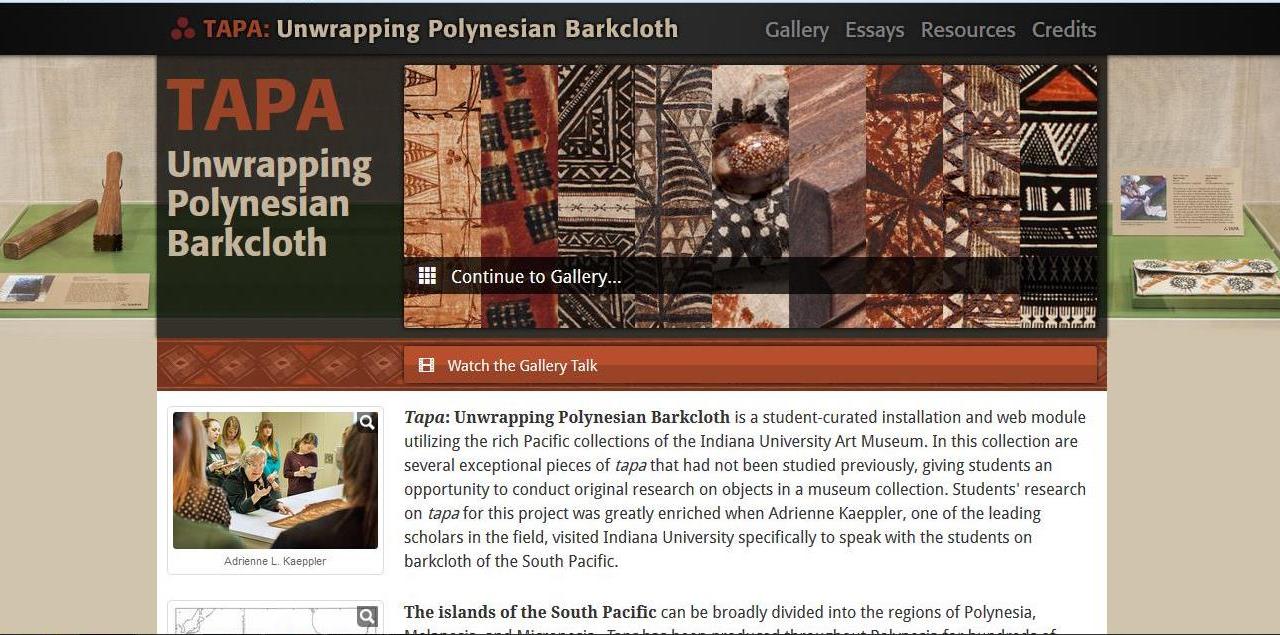
Several years ago, in a post about campus art museums, I posed the question “With education increasingly unbundled and distributed, what is the role of museums in creating a sense of place?” In today’s post, Jennifer Wagelie volunteers a response, sharing a case study of an art history course she taught where students created an exhibition at the Indiana University Art Museum. Jennifer is the academic liaison at Jan Shrem and Maria Manetti Shrem Museum of Art (opening on the campus of UC Davis on November 13,2016).
My former boss at the National Gallery of Art, Faya Causey, likened the museum to a teaching hospital and the interns to medical students.Instead of learning how to be physicians, our interns learned how to become museum professionals, trained as specialists in various departments and as generalists through weekly sessions with museum personnel.
I carried that model with me as I moved on to other positions within the field – the idea that one of our main responsibilities is to help train the next generation. It’s easy to argue then that university museums provide the perfect training ground, uniquely positioned on university campuses around the country, with direct and daily contact with students (the next generation).
As many of you know very well, “training” in a university museum takes many forms – internships, of course, but also research assistantships, work-study opportunities, participation in museum-focused student organizations, lectures, and museum-based classes. And when I served as the Andrew W. Mellon and Anthony J. Moravec Senior Academic Officer at the Indiana University Art Museum, my colleagues and I offered those opportunities to students in a variety of forms. However, of all these forms the one that for me proved most effective for helping students gain both specialized skills and an appreciation for all aspects of the institution occurred in the spring of 2013 when we offered a new class through IU’s History of Art Department. Taking a cue from the Andrew W. Mellon Foundation’s 2007 report, “College and University Art Museum Program,” which described exhibitions as having an enormous impact on student learning and engagement, we developed a course titled, “On Exhibit: The Pacific Islands.” “On Exhibit” endeavored to provide students with the experience and tools to create an art exhibition from inception to opening, all within a single semester.
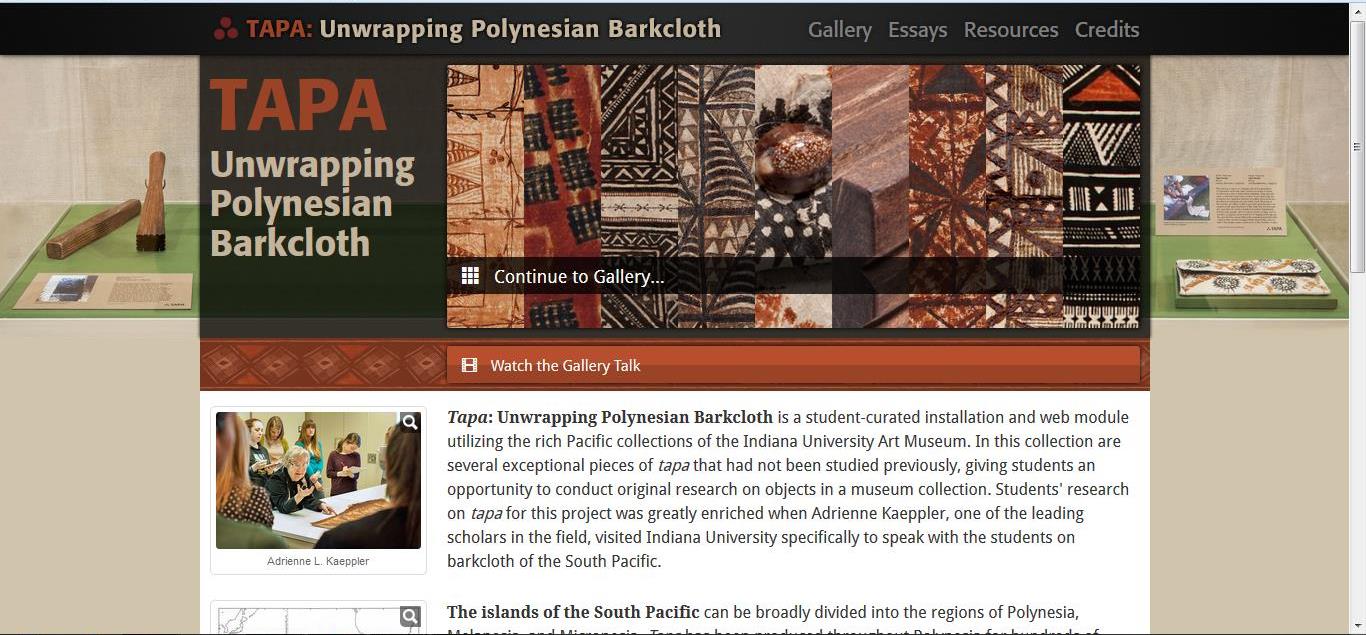 |
| Screenshot of Exhibition Website |
The planned exhibition would be localized to the Pacific Islands and focused on tapa or barkcloth, found throughout the Pacific, especially in Polynesia. Early on we decided that there would be both a small installation– designed to easily fit in to where the museum’s Pacific objects were already held, and an online component. The syllabus was relatively skeletal to enhance student input and investment and we instituted a Wiki-page where students would add information on objects and their activities as we went. Finally, written material had to be completed by spring break with each student writing about a single work of art. These were the things we knew going in. The intent was to create a structure, but leave enough flexibility to allow for the course to develop organically.
A week and a half after class began, students started to prepare for the arrival of the course’s visiting scholar, Adrienne Kaeppler, the curator of Oceanic Ethnology at the Smithsonian’s National Museum of Natural History. Inspired by the breadth and depth of Dr. Kaeppler’s scholarship, the students dove into learning about her work and tapa, and during the week she was in residence, she generously shared her scholarly and curatorial knowledge with the class.
Students then formed a museum within a museum and self-selected themselves into departments – education, the Web team, graphic design, marketing, special events, with everyone contributing to the curatorial aspects of the exhibition. Individual classes were treated like staff meetings. Students (colleagues) kept each other updated on what their departments were doing and created deliverable schedules. Built into the recipe were ways to address not only how an exhibition is created, but in the case of focusing on the Pacific Islands, it also demanded that students consistently ask themselves how can we responsibly display works of art from cultures that are not our own. I remember most distinctly that each class period presented a teachable moment, offering opportunities for students to think critically and solve problems. Throughout, we relied on the generosity of museum colleagues who served as advisors to the students in their “departments.” The project ended with a spectacular opening that celebrated the students’ work, thanked all who had been involved, and was followed by an all-day education program, where the public was invited to “make” their own tapa.
By my request, last week a former student sent the following comment to me in regards to the course. It reconfirms that this type of experiential learning is extremely effective and adds further evidence that the museum is indeed a teaching hospital. She wrote, “For me, the class was life changing. I reference it in every job interview I’ve had since finishing college because it was one of the few times my college education wasn’t passive. By engaging with the museum, we were actively learning in a way I had not before, and have not since.”
I learned a great deal from being at the helm of a project of this type and left with invaluable notes….so happy to share.
My recommendations:
- Make sure your entire museum is on board with the project. You will need everyone’s help, patience, and understanding.
- Bring in an outside scholar who is a specialist in the area your exhibition seeks to highlight. It expands the students’ view of the work, and helps to engage faculty and staff outside of the museum.
- Tie the subject with a course already being taught. Having “On Exhibit” in the semester after the survey course in the Pacific Islands was offered was important to use because we knew it was a largely unfamiliar place for our students, but I would recommend that sequence regardless of subject matter or student’s perceived familiarity to the exhibition topic.
- Lastly, have an online component to give the project a more permanent quality.
Additional Digital Resources from “On Exhibit”:
Exhibition Web site
Press Coverage
Teaching Tool (later created by a student of the course)
Class Instagram Site

